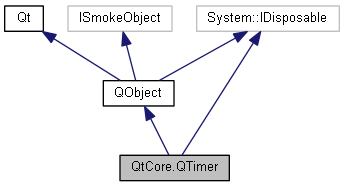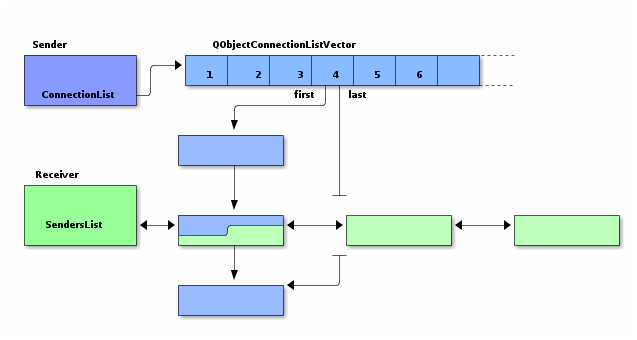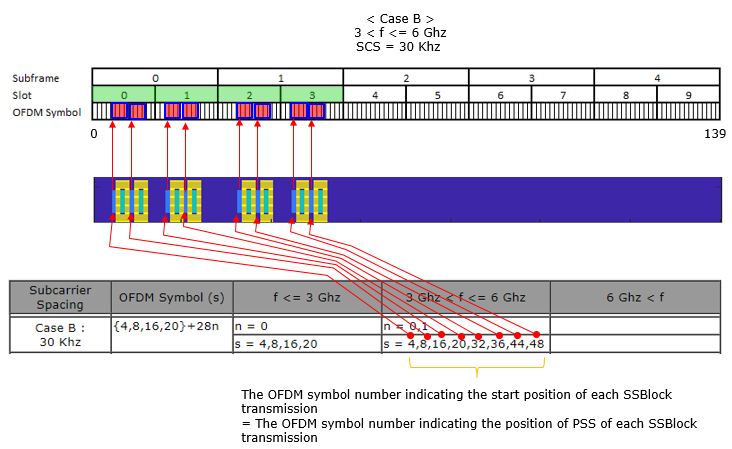Qtimer Signal Slot Example
Posted By admin On 30/03/22The QTimer class provides a high-level programming interface for timers. To use it, create a QTimer, connect its timeout signal to the appropriate slots, and call start. From then on it will emit the timeout signal at constant intervals. Example for a one second (1000 millisecond) timer (from the Analog Clock example). QTimer; Basic Usage; QTimer::singleShot simple usage; Simple example; Singleshot Timer with Lambda function as slot; Using QTimer to run code on main thread; Signals and Slots; SQL on Qt; Threading and Concurrency; Using Style Sheets Effectively. This signal does nothing, by itself; it must be connected to a slot, which is an object that acts as a recipient for a signal and, given one, acts on it. Connecting Built-In PySide/PyQt Signals. Qt widgets have a number of signals built in. For example, when a QPushButton is clicked, it emits its clicked signal.
I cannot figure out how moveToThread is working with QTimer class member. I have a simple code example of my problem. Description of the code example: MyObject1: Create MyObject2. Move MyObject2 to a thread using moveToThread. Connect the started signal from QThread to the MyObject1 slot process. MyObject2: Class that inherits from QObject. 기본적 signals and slots 사용법. Communication Exmaple Simple example of signals and slots look at MOC /home/rootshell/Code /Qt. (& mtimer, & QTimer:.
Does large use of signals and slots affect application performance? (2)
The question is just done for educational purpose:
Does the use of 30-50 or more pairs of signals and slots between two object (for example two threads) affect the application performance, runtime or response times?
Qtimer Update Ui
First of all, you should probably not put any slots in QThreads. QThreads aren't really meant to be derived from other than by reimplementing the run method and private methods (not signals!).
A QThread is conceptually a thread controller, not a thread itself. In most cases you should deal with QObjects. Start a thread, then move the object instance to that thread. That's the only way you'll get slots working correctly in the thread. Moving the thread instance (it is QObject-derived!) to the thread is a hack and bad style. Don't do that in spite of uninformed forum posts telling otherwise.
As to the rest of your question: a signal-slot call does not have to locate anything nor validate much. The 'location' and 'validation' is done when the connection is established. The main steps done at the time of the call are:
Locking a signal-slot mutex from a pool.
Iterating through the connection list.
Performing the calls using either direct or queued calls.
Common Cost
Any signal-slot call always starts as a direct call in the signal's implementation generated by moc. An array of pointers-to-arguments of the signal is constructed on the stack. The arguments are not copied.
The signal then calls QMetaObject::activate, where the connection list mutex is acquired, and the list of connected slots is iterated, placing the call for each slot.
Direct Connections
Not much is done there, the slot is called by either directly calling QObject::qt_static_metacall obtained at the time the connection was established, or QObject::qt_metacall if the QMetaObject::connect was used to setup the connection. The latter allows dynamic creation of signals and slots.
Queued Connections
The arguments have to marshalled and copied, since the call has to be stored in an event queue and the signal must return. This is done by allocating an array of pointers to copies, and copy-consting each argument on the heap. The code to do that is really no-frills plain old C.
The queuing of the call is done within queued_activate. This is where the copy-construction is done.
The overhead of a queued call is always at least one heap allocation of QMetaCallEvent. If the call has any arguments, then a pointers-to-arguments array is allocated, and an extra allocation is done for each argument. For a call with n arguments, the cost given as a C expression is (n ? 2+n : 1) allocations. A return value for blocking calls is counter as an argument. Arguably, this aspect of Qt could be optimized down to one allocation for everything, but in real life it'd only matter if you're calling trivial methods.
Benchmark Results
Even a direct (non-queued) signal-slot call has a measurable overhead, but you have to choose your battles. Ease of architecting the code vs. performance. You do measure performance of your final application and identify bottlenecks, do you? If you do, you're likely to see that in real-life applications, signal-slot overheads play no role.
The only time signal-slot mechanism has significant overhead is if you're calling trivial functions. Say, if you'd call the trivial slot in the code below. It's a complete, stand-alone benchmark, so feel free to run it and see for yourself. The results on my machine were:

What should be noted, perhaps, is that concatenating strings is quite fast :)
Note that I'm doing the calls via a function pointer, this is to prevent the compiler from optimizing out the direct calls to the addition function.
Few talk about the use of class QTimer in Qt. This is a small lightweight theme after a series of articles about QSqlTabelModel volume and the resulting consequences of it.

Timers we may need to create a poll LAN devices via TCP / IP stack with certain intervals or hourly data validation or active connections to the server. Yes to anything !? And here we come to the aid QTimer, which we consider the example of output every second time QLabel.
Project structure
We use a minimum of files in our project:
- QDataMapperWidget.pro
- mainwindow.h - header file of the main application window;
- mainwindow.cpp -source window;
- main.cpp - the main source file from which the application starts;
- mainwindow.ui - form of the main application window;
A draw form in the Designer Qt Creator. But there is nothing to draw. QLabel thrown into the middle and ready.
mainwindow.h
Qtimer Pyqt
All we need to be happy in this project - a slot that will respond to the operation of a QTimer, but the object of this class.


Qtimer Timeout
mainwindow.cpp
And now a few lines to launch the timer. In my comments more than code. Usually so on Assembler`e write - 20% and 80% of the code comments.
Conclusion
As a result, when you start to discover how every moment in time is changing us in the application window